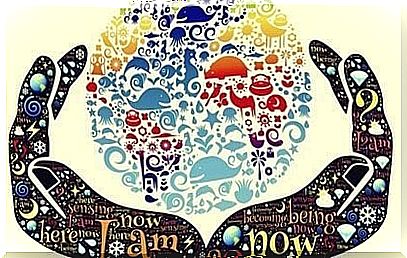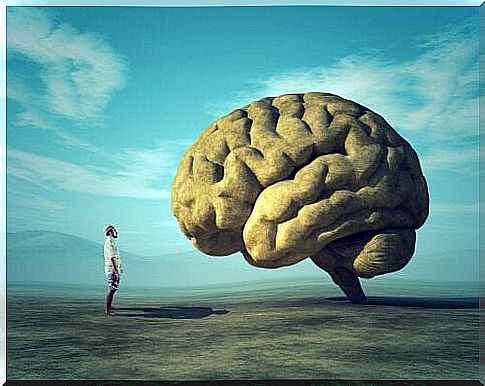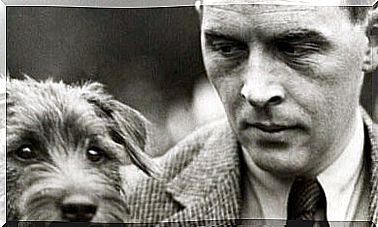The Word Association Test By Carl Gustav Jung

Carl Gustav Jung’s word association test is one of the most fascinating tools we have for assessing your psyche. It is based on the idea that your subconscious is sometimes able to control the conscious will. A single word can bring past trauma to the surface or reveal unresolved inner conflicts.
This instrument has been accepted in science for decades. Experts used it in a variety of contexts. Still, we want to mention that this is a projective test. This means that experts must use the word association experiment in conjunction with other sources and research methods, such as conversation, in order to be able to draw precise conclusions.
Jung developed the word association test in the middle of the 20th century to find out more about the subconscious. He wanted to better understand how it was expressed and find appropriate channels to analyze it. He also wanted to enable his contemporaries to learn more about the subconscious and ultimately to address the problems that limited the freedom and well-being of their patients.
The technique couldn’t be easier to use. The test leader gives the patient a word. He should answer this with the first word that occurs to him. Experts claim that the patient’s answers almost always involve emotional distress.
In addition, the therapist must monitor the patient’s physical and emotional responses. As soon as the test is completed, it interprets this along with 100 queried words. Although this test is over a century old, it is still valid.

Carl Gustav Jung’s Word Association Test: Aims, Features, and Applications
At the beginning of his career, Carl Gustav Jung worked in the Burghölzli Psychiatric Clinic at the University of Zurich (Switzerland). There he worked under Paul Eugen Bleuler. You may recall that Bleuler established many of the concepts used in psychology and psychiatry today.
Jung began to study trauma and complexes here. In his opinion, one way to understand them and bring them to light was through analyzing the patients’ dreams. They could also be brought about through active imagination or fantasy. In his daily work with patients, he discovered that certain words and expressions acted as stimuli for the subconscious.
One method for him to bring this activation through the psychological universe of trauma, fear and conflict and to come into contact with him was to generate a group of key words and use them as a stimulus. To test this theory, he developed the word association experiment described here.
At first glance, this seems like just a game to most people. The test consists in having one say a word and the other respond with the first thing that comes to mind. What he conveys with it, however, goes far beyond a childish play on words. The therapist also pays attention to the physiological response to the word he utters and interprets it in the context of the patient’s response.
How do therapists use this method?
First, Carl Gustav Jung made it clear that this test was not useful for all patients. For example, it is suitable for those cases in which the patient is overly opposed to working with the therapist, and also not for those clients who do not take the test seriously. Patients who do not have sufficient control over their language skills do not benefit either. This last category includes people who have language problems due to their age, communication difficulties, neurological problems, developmental disorders or other conditions.

The test consists of presenting 100 stimuli to the patient. For each word, the patient must say the first thing that comes to mind aloud. He should do that immediately.
The therapist writes down the answer and notes other cues such as the time it took the patient to give the reaction, the level of discomfort the patient was experiencing, and the expression on their face. Posture, non-answers and repetition of the given word can also be important.
The reliability of the word association by Carl Gustav Jung
Carl Gustav Jung found that this instrument is ideal for family therapy. When he used it in the appropriate situations, he observed similar reaction patterns over and over again. This enabled him to identify the source of several problems at once.
Jung himself gave up this test when he discovered his interest in experimental psychiatry a short time later. Nevertheless, experts used this test for a long time, until around 2005. Now it is only used in Jungian therapy programs or as a supplementary projection technique.

In 2013, Dr. Leon Petchkovsky conducted an interesting study on the subject. Using magnetic resonance, he showed that the words from Jung’s word association test produced very noticeable neurological reactions. The mirror neurons were activated when patients heard words such as father, child, family, abuse, and fear. He also observed increased activity in areas such as the amygdala, hippocampus, and islet cortex. These results were particularly evident in people with post-traumatic stress.
These findings prove once again that words can evoke emotions, memories and thoughts that we otherwise ignore. Despite the fact that Jung’s word association experiment has received many criticisms, it is still a relevant resource, backed by several studies.









